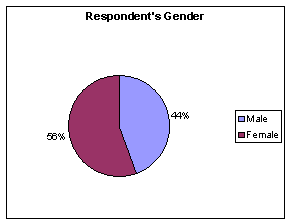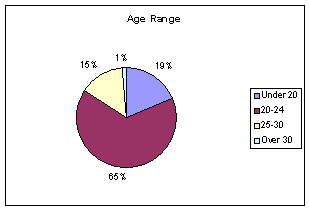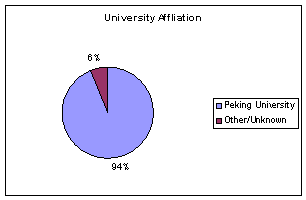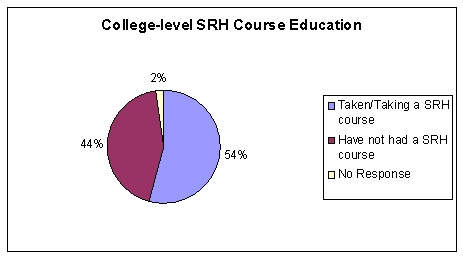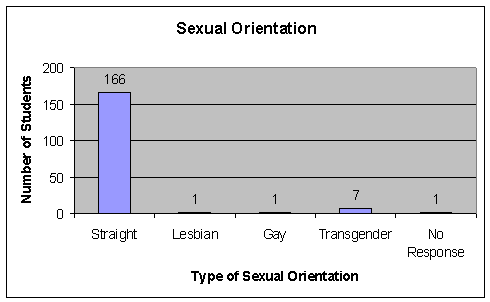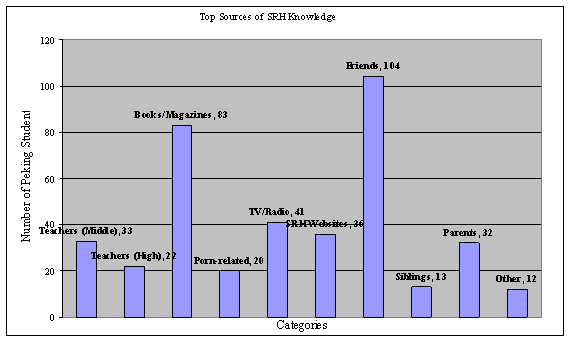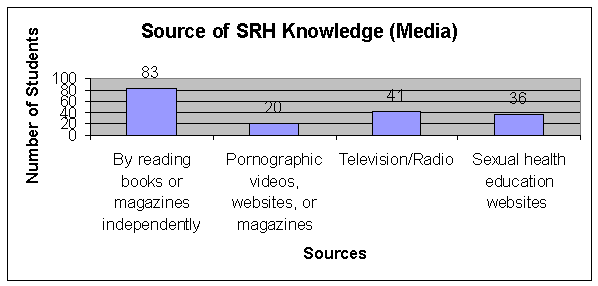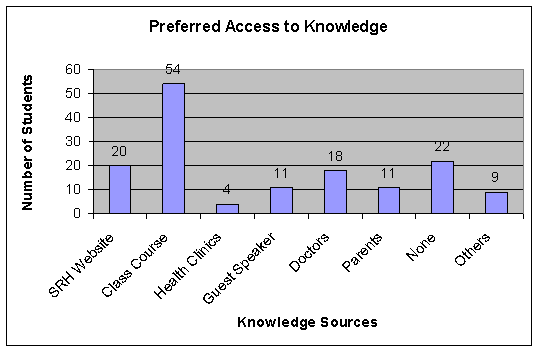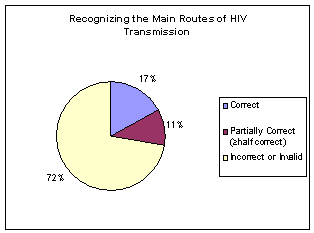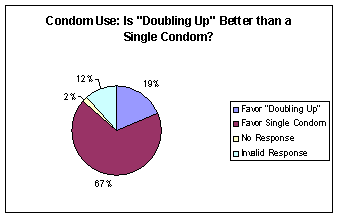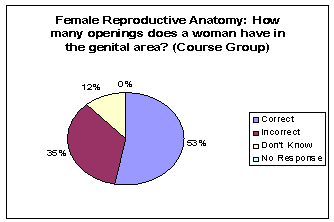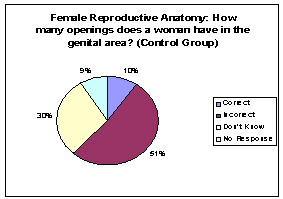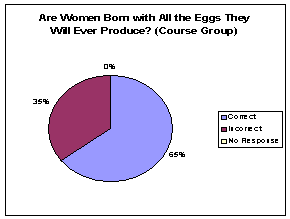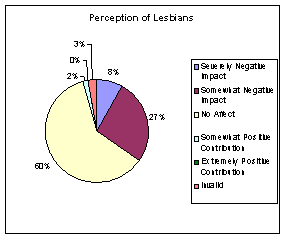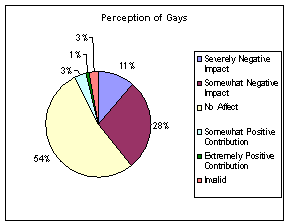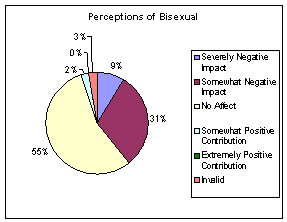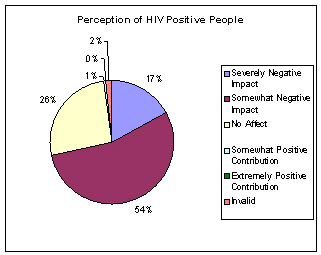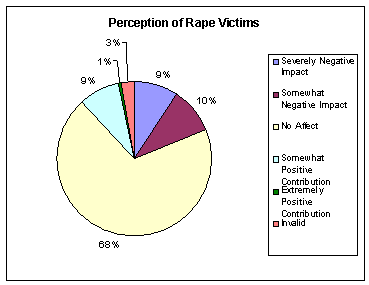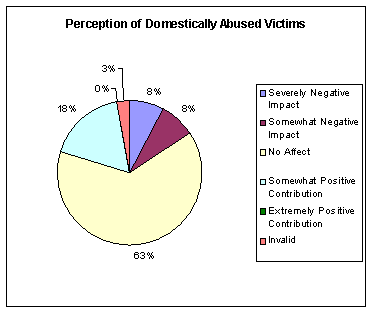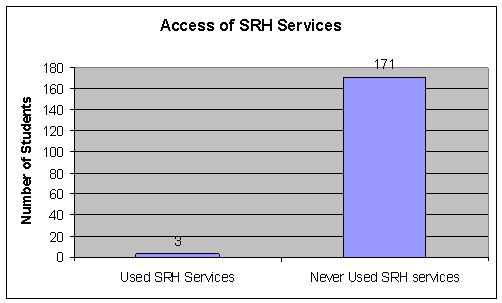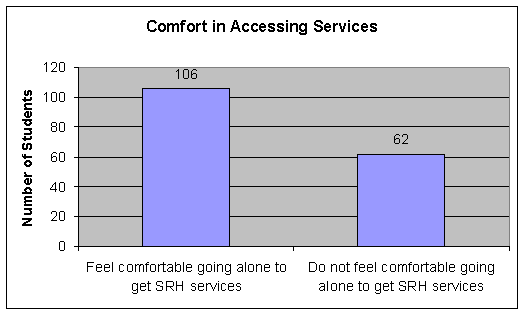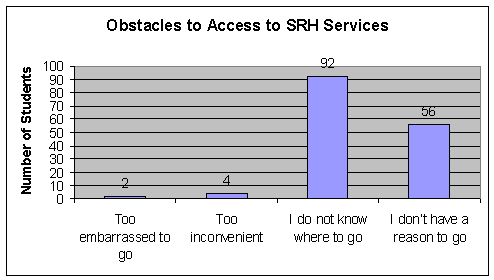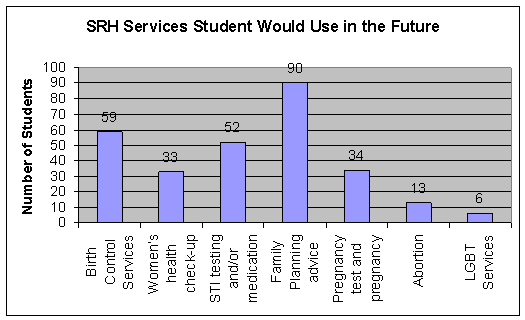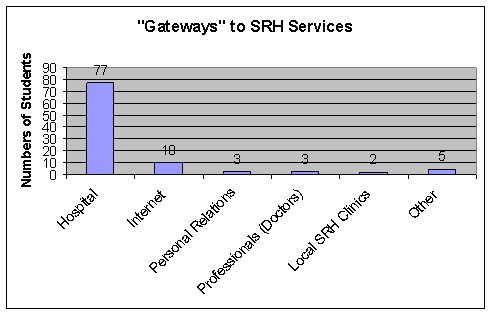Sexual and Reproductive Health of Peking University College Students:
An Examination of Sexual and Reproductive Health Education, Beliefs, and Practices
Karen Hong
John Hopkins University
Abstract
Understanding the education, beliefs, and practices of Peking University students could potentially help with designing pertinent and effective sexual and reproductive health (SRH) curricula, educating the public about sexual minorities, and removing barriers to accessing SRH services. After a review of The Chinese Journal of Human Sexuality, it was evident that college students’ sources of SRH knowledge, beliefs, and practices were not thoroughly examined within the last year in SRH research. The present study is the first to examine SRH educational resources and preferences of Peking University students, the benefits of Peking University courses on SRH, Peking University student perceptions about sexual minorities, and their barriers to accessing SRH services. A survey was given to 176 Peking University students on SRH, and Excel graphs were compiled to assess their responses. The survey suggested that there are better methods for disseminating information, weak SRH knowledge, little acceptance of sexual minorities, and few attempts to access SRH services. One of the most significant findings included the inaccurate perception of HIV transmission. Eighty-three percent of participants could not answer a particular question about HIV transmission correctly (Graph 10). Also, there was a largely negative perception of HIV-positive people. An overwhelming majority, 71 percent, of participants reported that if they discovered their friend was HIV-positive, it would have a slightly or extremely negative impact on their friendship (Graph 20). These results lend support to the idea that more SRH education is needed to create a more tolerant and informed population of Peking University students.
Introduction
The biggest influence for the questions in this survey was The Chinese Journal of Human Sexuality (February 2009-January 2010), one of the few reputable journals in China on sexual and reproductive health (SRH). Many of the questions asked in the survey were related to topics covered in the journal or important questions that were not addressed in the literature.
In 2009, there was scarce information identifying sexual and reproductive health (SRH) issues in China (Xu & Zhao, 2009, p. 7). One of the most alarming factors was the lack of SRH education for youth (Xu, H., 2009, p. 27). This indicated that low priority was given to an extremely important field of public health. An uneducated public implies that sexual health will remain a taboo topic within the Chinese community, preventing open dialogue about relevant issues, such as the spread of HIV, the expanding the lesbian, gay, bisexual, and transgender (LGBT) community, and the largely undocumented rates of sexual and domestic violence against women.
First, the complete absence of articles addressing issues on the LGBT community in The Chinese Journal of Human Sexuality suggested that the issues of sexual minorities were currently being ignored. Second, rape and domestically abused victims did not have a strong forum in China to express their voices. Third, the drastic growth of AIDS patients in China since 1989 made it important to facilitate dialogue about HIV. From 1985 to 1988, most of the AIDS patients in China were foreigners. However, from 1989 to 1993, HIV spread from 7 provinces to 21 provinces, with most HIV-positive people being drug users. From 1994 to 1997, AIDS spread throughout China. The first case of mother to child HIV transmission was documented in 1996. Since 1998, AIDS patients have increased by 40 percent each year. The population infected by AIDS was predicted to be 1 million in the next few years without proper control (Luo & Liao, 2009, p. 15). Furthermore, researchers believed that China’s traditionally conservative societal beliefs on sexual behavior will not decrease the transmission of HIV because China has become increasingly open to other culture’s sexual practices and behavior (Luo & Liao, 2009, p. 16). Linda Arnade, an HIV/AIDS NGO expert, agreed that there needs to be more education for the general Chinese public about sexual minorities to improve their living standards (Appendix D).
Educating the younger generations on SRH-related issues will provide a long-lasting impact on the policies, attitudes, and behavior toward the LGBT community, the HIV-positive community, and the victims of abuse by creating tolerance and understanding. The first step to addressing this issue is to discover how students would like to learn information on SRH. Although past surveys have identified students’ sources of knowledge, the surveys used in The Chinese Journal of Human Sexuality have never asked students how they would like to gain knowledge on SRH. For the survey used in this project, both present means and preferred means of acquiring SRH information were examined. It was hypothesized that it was possible to find out how to effectively reach future students by asking about their education preferences.
Although personal sexual practices of study participants have been surveyed in the past, there is little information about ease of access to SRH services in The Chinese Journal of Human Sexuality. The ability of college students to access SRH services was not publicized and the importance of accessing those services was not emphasized, according to Dr. Yang (Appendix D), a resident doctor at Peking University First Hospital. Surveying about this topic explored whether there are barriers to accessing SRH services.
With China’s rapid economic and social growth in the last thirty years, it is most likely that perspectives on SRH issues have also dramatically changed. Therefore, if any of the above issues have been addressed within the past few years, the perspectives and beliefs may be drastically different now (Zhang Y., 2010, p. 41). Thus, this research study asked questions that have never been asked before but also provided an up-to-date assessment on the current education, beliefs, and practices of Peking University students. Overall, the aim of the study was to help identify key topics that urgently need to be addressed in Chinese SRH.
Study Purpose
The goal of this study was to discover the education, beliefs, and practices of Peking University students by asking questions that have not been addressed recently in Chinese SRH research. If the survey was an accurate indicator of the current status on SRH on the Peking University campus, then evidence suggested that there were better modes for disseminating SRH information, weak SRH knowledge, little acceptance of sexual minorities, and few attempts to access SRH services among Peking University students.
Defining Terminology
SRH is a broad area of public health. In this study, SRH was partially understood to be the definition given by the World Health Organization:
Reproductive health addresses the reproductive processes, functions and system at all stages of life. Reproductive health, therefore, implies that people are able to have a responsible, satisfying and safe sex life and that they have the capability to reproduce and the freedom to decide if, when and how often to do so. Implicit in this are the right of men and women to be informed of and to have access to safe, effective, affordable and acceptable methods of fertility regulation of their choice, and the right of access to appropriate health care services that will enable women to go safely through pregnancy and childbirth and provide couples with the best chance of having a healthy infant. (World Health Organization, 2010)
Furthermore, the research study also defined SRH to include being knowledgeable about safe sex practices and the prevention of Sexually Transmitted Infections (STIs), such as HIV/AIDS. In the investigation, SRH education was defined as any type of information source where the subject believed they garnered true information about SRH.
In regards to sexual orientation, if the subject identified as straight, it was assumed that the subject was heterosexual and primarily attracted to the opposite sex through sexual, physical, or romantic attractions. If the subject identified as gay or lesbian, then it was assumed that the subject was homosexual and primarily attracted to the same sex through sexual, physical, or romantic attractions. If the subject identified as bisexual, it was assumed that the subject was attracted to both sexes through sexual, physical, or romantic attractions. If the subject identified as transgender, then it was assumed that the subjects identified themselves as a sex other than his or her biological sex. There were no assumptions as to which sex a transgender was attracted. In this study, sexual minorities were identified as the LGBT community, HIV-positive people, rape victims, and domestically abused victims.
In regards to relationships, a “severely negative impact” on a friendship was assumed to mean the termination of a friendship or extreme dislike for the other person. A “somewhat negative impact” on a friendship was assumed to mean less interaction in the friendship than previously or some dislike for the other person. “No Affect” to a friendship was assumed to mean a neutral view where new information about the friend did not change their relationship in any way. A “positive contribution” to the friendship was assumed to mean that a stronger bond was formed in the friendship, bringing the friends closer than previously. An “extremely positive contribution” to the friendship was assumed to mean that an extremely stronger bond was formed in the friendship, bringing the friends closer than previously.
In regards to SRH services, family planning services was assumed to mean preparing for pregnancy and registering with the government to have a child. Family planning services also included speaking with professionals on the best time to conceive, proper diet and nutrition during pregnancy, and other SRH concerns related to pregnancy. Birth control services were assumed to mean obtaining, changing, or terminating contraceptive use.
Research Motive
The motivation behind this research was to identify SRH issues in China so that social workers and researchers could begin to implement solutions for SRH issues that affect China. This survey asked groundbreaking questions about attitudes towards sexual minorities and access to Chinese SRH facilities. Our intent was to break the silence on culturally sensitive topics, such as the growing LGBT community, existing sexual and domestic abuse, using SRH services, and understanding what causes HIV/AIDS. The goal of this study was to generate more information that was not commonly researched in the SRH research community, whether due to cultural taboos or lack of government funding. Since SRH was a relatively new topic to China, any research conducted in this area broadens the discussion forum. For example, there was little research or mention of rape and domestic violence victims in China. In fact, the first official research study on the numbers of rape and domestic violence victims in China was reported in 2010, according to Ms. Linda Arnade (Appendix D). A study of abuse victims will prompt other researchers to investigate this issue. Through our research study, it was possible to discover better ways of disseminating SRH knowledge, identify sexual minority discrimination, and acknowledge whether access to SRH services was adequate. If it was identified that there were issues in these areas, then they will be more specifically defined for public health workers to implement programs for improvement. Because the survey covered many broad areas, specifically education, beliefs, and practices, any significant findings from the survey can be used for detailed exploration in future studies.
Methodology and Materials
Given that SRH was a relatively new area of research in China and SRH issues still need to be given more attention, the goal of this study was to discover the education, beliefs, and practices of Peking University students by asking questions that were not addressed recently in Chinese SRH research. Through this study, it was possible to identify some of the SRH issues affecting the rising generation of Chinese citizens. Questions that were asked in the survey included SRH knowledge questions, SRH education preferences, attitudes toward the LGBT community, attitudes toward rape and domestically abused victims, and the ease of access of SRH services for college students and their willingness to use those SRH resources. The main method of creating the survey was a literature review of The Chinese Journal of Human Sexuality (February 2009 to January 2010), which was graciously provided by Professor Hu Peicheng of Peking University Medical School who is also Editor-in-Chief of The Chinese Journal of Human Sexuality. The main method of formulating the SRH educational knowledge questions was from careful auditing of a Peking University SRH course. Furthermore, interviews with Linda Arnade, Dr. Wang Yang, and Daisy Wang (Appendix D) were conducted to gain assistance with the study design and to learn about the education, beliefs, and practices of Chinese college students through open-ended questions.
Survey Distribution Method
Survey distribution was executed from April 26, 2010 to April 30, 2010 on the Peking University campus. The sampling method was convenience sampling. The first sample was selected by going to an area of high student traffic on Peking University campus on April 26, 2010 before and during the lunch-break period. Because there was a Student Union event going on at the time, there were many people waiting in line at the Student Union table to get their free giveaways. Taking advantage of the wait-time, surveys were passed out to consenting students who were standing in line. Students were asked to show identification to receive the Student Union’s products, ensuring that all participants of the survey at that time were affiliated with Peking University. A second sample of the surveys was completed the same day, but in the afternoon in the SRH college course classroom, 50 minutes before class started. This allowed comparison of college SRH-educated students with a random student population. A third sample of the surveys was conducted during the rest of the week in the main Peking University classroom buildings near the East Gate before and during the lunch break period. As students walked through the hallway to and from classes, they were asked to take the survey. Consenting students were given the survey. Each survey distribution time was two hours on average. A survey took 5-10 minutes to complete. In all three sampling locations, each survey participant was given a small gift for their participation. The gift was a small stapler, memo pad, or pen.
Instrumentation
An original survey was designed for this research study. The study was originally written in English, and then translated into Chinese (Appendix A, Appendix B). Two Chinese graduate students assisted in the translation. However, the format for the survey was taken from the “北京市青年学生性知识、性意识及性行为调查研究,” or “Beijing Students’ Sexual Knowledge, Sexual Awareness, and Sexual Behavior research” study. The survey attempted to measure general information about the participant, the education, the beliefs, and the practices of Peking University students. In terms of general information about the participant, the goal was to acquire a demographic picture and identify sexual orientation. In terms of education, the survey measured current sources of education, preferred sources of education, and ability to answer SRH questions correctly. In terms of beliefs, the survey measured the sympathy that students felt towards the LGBT community, people that are HIV-positive, and victims of sexual and domestic abuse. In terms of practices, the survey measured the number of students that accessed SRH services and identified popular SRH services and barriers to accessing SRH services.
Procedure and Time Frame
The survey distribution time lasted from April 26, 2010 to April 30, 2010. Interview and research time lasted from March 28, 2010 to May 31, 2010. Participants were asked to verbally consent to take the survey before the paper was handed to them. Pens and clipboards were provided for the participants to use, if they chose. There was no time limitation on how long participants took to answer the questions. When participants were done with their survey, they located a survey administrator. The survey administrator checked the survey for completion. If there was an incomplete section, the participants were asked once to fill in the section, with their consent. If they refused to answer the section, then the survey was marked as incomplete. Upon turning in the survey, all participants were given a small gift for their participation. All surveys were given two numbers: one to identify the data collection day, another to identify the survey number.
Analysis plan
A basic Excel spreadsheet was used to organize the data and make simple graphs. Pie graphs were created for questions that required the participant to choose only one of the answer options. Bar graphs were compiled for questions that required the participant to choose more than one answer from the answer choices or for questions that allowed the participant to choose more than one answer from the answer choices. For the pie charts, percentages of responses for each answer choice were given and those percentages were graphically represented as a portion of a circle. For the bar graphs, the number of responses for each answer choice was given, and the volume of the responses was represented through bar length. The bar graphs allowed the number of students to be the dependent variable.
Validity and reliability
To increase the face validity of the survey, a pre-test with Chinese Peking University students was held two weeks before formal distribution of the survey. After making the first round of edits based on the pre-test participant feedback, a second round of pre-tests were distributed. There were no more edits made after the second round of pre-tests because there were no further suggestions. However, the valid parts of the survey were the general information, beliefs, and practices sections. For questions referring to education attainment and education acquirement, there were inconsistencies with the answer choices in the real survey that made interpretation difficult. For questions testing educational knowledge, it is very likely that students interpreted the questions in different ways, giving a variety of answers that could be correct or incorrect, depending on the interpretation. This possible confusion was not edited before survey distribution because pre-test students were not asked if the interpretation of the question was concurrent with the researcher’s intent. Furthermore, translation of the survey from English to Chinese may have created barriers in valid interpretation because the data were understood as the English meaning of the survey. In a post-test with American students on the face validity of the education survey questions, all ten post-test participants were able to identify the meaning of the survey question but five indicated that they were slightly confused, and four agreed that it would be easy to misinterpret the question. For example, one post-test participant could see that some survey participants might have put “two” as the number of holes in a woman’s genital area. This could be because it is unclear whether the anus is part of the excretory system or the reproductive system, or both. In addition, participants could have put “one” if they assumed that both the anus and the urethra were part of the excretory system and not the reproductive system. Similarly, when asked about the number of holes in a male’s genital area, some participants may have put “one” if they assumed either the anus or the urethra was part of the excretory system, and not the reproductive system. Confusions such as these limited the accuracy of the interpretations about the educational knowledge section.
In terms of content validity, the general information and beliefs sections were strong, but the practices and education sections were weak and weakest, respectively. There was adequate coverage of the topics of general information and beliefs to interpret the results. However, the practices section asked an open-ended question (Appendix A) where students answered vaguely, making it difficult to come to a valid conclusion. For the education section, only a few specific questions were asked, thus interpretation of a student’s overall SRH knowledge could not be assessed with validity. More breadth would be needed in this section for more content validity.
The reliability of the survey was not thoroughly tested. Thus, it is not possible to determine the repeatability or stability of the survey. In the future, should the survey be conducted again, an internal consistency test should be added in the form of additional questions similar to original survey questions but stated with different wording. By comparing the correlation of the responses to the two similar questions, the reliability could be better determined.
Assumptions
To make interpretations from the data, some assumptions were made about the study population and their response behavior. For this study, it was assumed that the participants represented the population of Peking University students currently studying at Peking University. Secondly, it was assumed that participants correctly interpreted the survey questions. This includes assuming that participants understood the terminology as the researcher intended. Thirdly, it was assumed that the survey was translated from English to Chinese in such a way that the original meaning was preserved. Lastly, it was assumed that the participants answered all questions on the survey to the best of their ability, including being truthful for all questions.
Scope and limitations
Firstly, design of the survey has its limitations because the primary literary review was conducted from only the twelve most recent journal issues of The Chinese Journal of Human Sexuality. This implies that there was a large volume of data related to this study that was not reviewed. This means that the survey questions may not have been as novel as assumed. However, after a PubMed search using a variety of combinations of the key words “China,” “Sexual health,” “reproductive health,” “college students,” and “education,” there were no significant studies that had conclusions dissimilar from the journal review that was conducted. Furthermore, The Chinese Journal of Human Sexuality is currently the most reputable SRH journal in China. There are few others that are reliable enough for a journal review. Although it would be ideal to do an even more extensive review of The Chinese Journal of Human Sexuality, given the rapidly changing SRH education, perceptions, and practices of youth (Zhang Y., 2010, p. 42), it is not pertinent to go too far back into past articles because the older the research, the more likely the data are outdated. Therefore, given the time frame of the research study, a 12-month review of The Chinese Journal of Human Sexuality was deemed sufficient. The narrow focus of the literary review did not place significant limitations on the survey because it did not hinder the researcher’s ability to interpret the results.
Secondly, the education section of the survey was the least informative of all four examined areas because of the narrow scope of questions that were asked. Because the survey size was too small to calculate a reliable significance, it was not necessarily true that the participant responses provided a reliable interpretation of the education, perceptions, and practices of all students at Peking University. However, the intention of the survey was to receive an initial idea of beliefs, practices, and perceptions of Peking University students so that further detailed research could be conducted on any of these areas in the future. Therefore, for the purposes of this short study, the data and information provided was sufficient for an examination of the research question.
Results
Description of the sample
The population for this study was defined as all Peking University-affiliated students or students taking courses at the Peking University campus who completed the study survey during the sampling time frame from April 26, 2010 to April 30, 2010. For this survey, 176 participants were sampled. There was almost an even number of participants that identified as male or female (Graph 1). A majority of participants identified as between the ages of 20-24 (Graph 2). Almost all of the participants were only students at Peking University and were not affiliated with another university (Graph 4). There were about the same number of students who responded from natural sciences, social sciences, and humanities majors and a portion who were still undecided on their major (Graph 3). Slightly more than half of the participants identified as having taken a SRH college source (Graph 5). Almost all students identified as straight in sexual orientation (Graph 6).
Graph 1
Percentage of female and male respondents.
Graph 2
Percentage of respondents in different age ranges
Graph 3
Percentage of respondents whose primary affiliation is or is not Peking University
Graph 4
Respondent’s areas of study by percentage
Graph 5
Percentage of respondents who have and have not taken a college-level SRH course
Graph 6
Number of students that identify as straight, lesbian, gay, transgender, or did not respond
Education and Education Preferences Results
Friends and books/magazines were the most popular and second most popular ways of obtaining SRH education, respectively (Graph 7). Friends were by far the most popular source in terms of people as education sources (Graph 8), and it was evident that books/magazines were the most popular media source for SRH education (Graph 9). Participants’ most preferred way to access SRH knowledge out of the answer choices was through course lectures (Graph 10). Seventeen percent of participants were able to identify blood, semen, and vaginal fluids as methods, and the only methods, of HIV transmission (Graph 11). Identification of breast milk as a HIV transmission fluid was not tested on the survey. A majority of participants knew that using one condom is more effective than using two condoms at once as form of pregnancy prevention (Graph 12).
Graph 7
Number of students that use each type of source for their primary SRH knowledge
Graph 8
Number of students that use each type of people-type source for their primary SRH knowledge
Graph 9
Number of students that use each type of media-type source for their primary SRH knowledge
Graph 10
Number of students that prefer each type of source as their way of gaining SRH knowledge
Graph 11
Percentage distribution of how respondents identified the main routes of HIV transmission
Graph 12
Percentage distribution of whether respondents felt it is better to “double up” with condoms or use a single condom as a way of pregnancy prevention.Educational Knowledge
The sample that was currently taking a Peking University college course in SRH answered a question on female reproductive anatomy correctly about five times (Graph 13) more than the random sample (Graph 14). In addition, there was a higher percentage of students in the SRH college course who answered a question on female reproduction correctly (Graph 15) than the random sample of students (Graph 16).
Graph 13
Percentage distribution of SRH college course respondent’s accuracy in identifying the number of openings in a woman’s genital area
Graph 14
Percentage distribution of the control group respondent’s accuracy in identifying the number of openings in a woman’s genital area
Graph 15
Percentage distribution of SRH college course respondent’s accuracy in identifying whether women are born with all the eggs they will ever produce
Graph 16
Percentage distribution of the control group respondent’s accuracy in identifying whether women are born with all the eggs they will ever producePerceptions of Sexual Minorities Results
Attitudes of Peking University students towards the LGBT and HIV-positive community were examined. Thirty-five percent of the participants reported that if they discovered their friend was lesbian (Graph 16), it would have a slightly or extremely negative impact on their friendship. Thirty-nine percent of the participants reported that if they discovered their friend was gay (Graph 17), it would have a slightly or extremely negative impact on their friendship. Forty percent of the participants reported that if they discovered their friend was bisexual (Graph 18), it would have a slightly or extremely negative impact on their friendship. Sixty-six percent of the participants reported that if they discovered their friend was transgender (Graph 19), it would have a slightly or extremely negative impact on their friendship. Seventy-one of the participants reported that if they discovered their friend was HIV-positive (Graph 20), it would have a slightly or extremely negative impact on their friendship.
Attitudes toward domestically abused and rape victims were examined. Nineteen percent of the participants reported that if they discovered their friend was raped (Graph 21), it would have a slightly or extremely negative impact on their friendship. Sixteen percent of the participants reported that if they discovered their friend was domestically abused (Graph 22), it would have a slightly or extremely negative impact on their friendship.
Graph 17
Percentage distribution of perceptions of a friend should they tell the respondent they are lesbian
Graph 18
Percentage distribution of perceptions of a friend should they tell the respondent they are gay
Graph 19
Percentage distribution of perceptions of a friend should they tell the respondent they are bisexual
Graph 20
Percentage distribution of perceptions of a friend should they tell the respondent they are transgender
Graph 21
Percentage distribution of perceptions of a friend should they tell the respondent they are HIV positive
Graph 22
Percentage distribution of perceptions of a friend should they tell the respondent they were raped
Practices of Accessing SRH Services Results
Practices of accessing SRH services of the participants were surveyed. Ninety-seven percent of the participants reported they have never used SRH services (Graph 23). The majority (60 percent) of students felt comfortable accessing SRH services (Graph 24). The major obstacle of accessing SRH services for the participants was that they did not know where to go. The one other prominent reason was that the participant felt they had no reason to access SRH services (Graph 25). The two major services that participants would access and second most access if they used SRH services would be family planning services and birth control services, respectively (Graph 26). When asked what source they would use to receive SRH services, a large majority of participants cited “hospital” (Graph 27).
Graph 23
Percentage distribution of perceptions of a friend should they tell the respondent they have been domestically abused
Graph 24
Number of respondents that have or have not accessed SRH services
Graph 25
Number of respondents that feel comfortable or do not feel comfortable accessing SRH services alone
Graph 26
Number of respondents that do not access SRH services for each reason
Graph 27
Number of respondents who will use SRH services primarily for each of the services
Graph 28
Number of respondents that identified each of the sources to receive SRH services, should they need itInterviews
Daisy Wang 王东旭suggested doing a survey as the research study method. She explained the cultural sensitivities of examining SRH topics with Chinese populations. She also helped with the logistics of creating the survey (Appendix D).
Linda Arnade emphasized the discrimination of sexual minorities in China. She felt that there is more need for tolerance of all minorities in China, which begins with education about minority populations (Appendix D).
Dr. Wang Yang gave her insight on patients that she sees with STIs in the Department of Dermatology and Venerology at Peking University First Hospital (Appendix D).
Discussion and Conclusions
The motivation of this study was to gain a better understanding of the education, beliefs, and practices of Peking University students in SRH. With Western influences becoming more prominent in China and with the economic growth of China affecting the population’s traditional ways of thinking, it is important to keep updated on the perspectives of youth on SRH. Along with gaining a better understanding about the education, beliefs, and practices of Peking University college students, it is generally agreed that students need more education in SRH. Thus, this research study hypothesized that it was most likely that there are better methods for disseminating SRH information, weak SRH knowledge, little acceptance for sexual minorities, and few attempts to access SRH services. In general, the study’s findings agreed with these statements. However, by detailed examination of some of the important questions in the survey and combining it with the interviews that were conducted, it was possible to gain more insight into how and why this hypothesis was true.
Education and Education Preferences
The education data suggested that although friends are currently the main source of SRH information for participants (Graph 7), participants preferred to learn SRH in a formal learning environment (Graph 9). This preference toward formal learning environments may be because this is the traditional way to teach SRH. In a study on migrant workers aged 15-49, the top 2 ways that contraception education was received was through lectures and material distribution (Huang, Fen, & Han, 2009, p.16). Subjects may have had a hard time imagining any other methods for learning about SRH. However, since SRH was not heavily emphasized in middle school, and even less in high school, this was a possible explanation for the significant number of students who turn to their friends for advice on SRH (Graph 7). The problem with this trend is the unreliability of the information that students are receiving. It seems that participants were uncomfortable using adults or professionals for advice (Graph 8) but relied closely on friends. Since parents and teachers traditionally discourage dating before college, participants were less likely to use them as a SRH resource (Wang, 2009, p. 42). Furthermore, parents are often uncomfortable talking to their children about these issues because they themselves were not well educated on SRH (Wang, 2009, p. 43). Thus, friends are the most frequently accessed SRH resource probably because they are easily accessible and participants felt safe confiding in them.
Given Dr. Yang’s opinion that the Internet plays a crucial role in the attainment of information (Appendix D), it is surprising that the Internet ranked fourth as the most frequently used source, well below friends, books, magazines, and television. This may be due to the wording of the source description, which was not inclusive of all websites but only SRH websites. The citation of “SRH websites” may have been too formal, and participants may not relate this to the informal forums, blogs, and chat rooms that participants may more frequently use to access SRH information online. In Huang’s study about migrant workers, it was found that the top two ways to acquire contraception knowledge was through publications and television programs (Huang, Fen, & Han, 2009, p. 16), which were the second and third highest ranking sources of SRH knowledge in our study, respectively (Graph 7). Thus, our study may reflect that participants use sources other than the Internet for SRH information.
When participants were asked about how they would have liked to learn about SRH as a teenager, the second most popular answer was that they did not feel that SRH education was necessary (Graph 10). Participants who chose this answer felt that SRH was not important to them as a teenager. This may be true for Chinese youth because they tend to be involved in their first relationship during the college years (Dr. Yang, Appendix D). Furthermore, this seems to be a popular sentiment of the Chinese culture that SRH doesn’t need to be talked about because once one becomes sexually active, one just “knows” about SRH, as Dr. Yang explained (Appendix D). Thus, the results reflect that this cultural belief is still prominent among Peking University student participants.
Unfortunately, it is not possible to compare sources of knowledge with preferred sources of knowledge because the options for the two questions were different. For example, “doctors” listed as an answer choice for the “preferred SRH source” question was not put in the “SRH source” question. There were several of these inconsistencies because these two questions were not originally seen as related. However, out of the possible options, an overwhelming amount of participants wanted to learn SRH through the classroom. This may be because there were no other idealistic options. For example, if “friends” was listed as a preferred option, perhaps that would have been the most popular choice. Thus, while it is possible to speculate on the results of these two questions, there is not enough consistency to draw firm conclusions.
Educational Knowledge
The second portion of the survey tested the participant’s SRH educational knowledge by asking specific SRH questions. The majority (72 percent) of participants could not identify at least half of the possible ways of HIV transmission that were listed in the survey and 83 percent of participants could not identify all of the HIV transmission methods (Graph 10). This was a large number that cannot be ignored. As HIV is a rising problem in China (Luo & Liao, 2009, p. 15), it is necessary for youth to understand how HIV is transmitted and not transmitted. Even though Dr. Yang stated that a majority of HIV transmissions were primarily caused through needle sharing or blood transfusions (Appendix D), knowing about all forms of HIV transmission is important. Because people were unsure how HIV was transmitted, they tended to be wary of HIV-positive people. In fact, 71 percent of students said that learning that their friend was HIV-positive would create a severe or somewhat negative impact on their relationship. This percentage of negative impact is higher than finding out if a friend was gay, lesbian, transgender, or bisexual. In comparison, only 26 percent said that finding out their friend was HIV-positive would not affect the friendship in any way. Since SRH is largely not talked about, it seems logical that a large majority of the participants failed to answer the question correctly.
However, this did not mean that the participants were unable to answer other SRH questions correctly. For example, most participants (67 percent) were able to identify that using two condoms during sexual intercourse is less effective in preventing pregnancy than one condom during sexual intercourse (Graph 11). A larger amount of participants might have answered this question correctly because this is practical information that is used in SRH practice. For instance, a sexually active college student could read about proper condom use and common misconceptions about condom use on the instructional manual that comes with the male condom. Many college students are not worried about STIs, as Dr. Yang stated (Appendix D), because they feel that in a monogamous relationship the chances of STIs are not high. In fact, in a survey conducted at four Beijing universities, out of the 236 participants who had sexual partners, a majority (58.5 percent) had only had one partner (Zhang & Xu, 2010, p. 3). Participants may not feel as affected by HIV because they are in monogamous relationships and therefore have a low risk of contracting HIV. However, the condom question that was asked applies to a commonly used contraceptive, thus it is more likely students would know the correct answer.
In addition, from the two questions about female anatomy, it is possible to see that a larger percentage of participants who took the Peking University SRH course answered the questions correctly. For the question about female anatomy (Graph 11, Graph 12) and the female reproduction process (Graph 13, Graph 14), there was a larger amount of students that answered the question correctly from the SRH college course participants. However, it is disappointing not to see almost all the SRH college course participants get the questions correct because the right answers were mentioned in their SRH course. Thus, it indicates that although the SRH college course increased the percentage of correct responses to the questions, many of the participants did not attend class on the day the answer was mentioned, or many did not retain the information they learned.
Perceptions of Sexual Minorities Results
Overall, it seems that there was an overwhelming amount of either negative feelings towards the LGBT community. There were only a small percentage of participants for all the sexual minority groups that would have thought their friendship was stronger if they found out their friends was part of the LGBT community. Because most of the participants identified as straight in sexual orientation, it is possible to see why they would be uncomfortable with people of different sexual orientation. Lack of information about these minority groups may cause participants to feel uncomfortable around someone who identifies as lesbian, gay, bisexual, or transgender. However, it is important to note that a large percentage of people were neutral, indicating that participants would not change their feelings about a friend should they reveal they are lesbian, gay, or bisexual. There were more negative feelings toward transgenders and not as much of a neutral attitude. This many be because lesbians, gays, and bisexuals are more talked about in contemporary China than transgenders. Being less understood, they would also be less accepted by participants.
Along with transgenders, a significant portion of participants also reported that they would react negatively toward HIV-positive friends. Similar to the transgender category, participants had less neutral responses than with the lesbian, gay, and bisexual categories. Thus, it seems that transgenders and HIV-positive people might be the most misunderstood sexual minority populations.
In contrast, the perception of domestic violence victims and rape victims was more positive than towards the LGBT and HIV-positive community (Graph 21, Graph 22). In these cases, a majority of participants said that they would be neutral if they found out their friend was a victim (domestic victims and rape victims, 63 percent and 68 percent respectively). This seems like a reasonable result because, unlike the LGBT community, being a victim of domestic violence and rape may not be perceived as a lifestyle choice. Furthermore, victims probably do not instill as much uncertainty in participants, but may even incur more sympathy from participants. This is consistent with the larger percentage of participants, in contrast with the LGBT categories, that reported that there would be a degree of positive contribution to a friendship should they find out their friend is a victim. Thus, this response from the participants is logical.
However, the perceptions section may be unreliable for making conclusions because these are mostly assumed to be hypothetical situations. It is assumed that participants would have to use their empathy skills to imagine most of these situations because it is most likely that participants have not experienced friends belonging to all the categories. Thus, participant’s real perceptions of sexual minorities are not measured—only their hypothetical perceptions.
Practices of Accessing SRH Services Results
In terms of accessing SRH services, Dr. Yang seems correct in stating that not many college students will get professional help with SRH-related issues (Graph 23). However, from the participant’s responses, it does not seem like they feel uncomfortable (Graph 24) or too embarrassed (Graph 25) to access services at the hospital (Graph 27) even though Dr. Yang listed privacy as the primary deterrence of patients from going to hospitals (Appendix D). Perhaps for the participants, SRH services are not yet relevant for them. Thus, they do not know where to access services (Graph 25), because they never had an urgent reason to do so. After all, if the college students are not looking to get pregnant, or may not be sexually active, then they probably would not seek SRH services (Graph 26). However, participants do not seem embarrassed to do so if they should need it. Despite this observation, it is not possible to predict what participants would do in a real situation, because an overwhelming majority of the participants have never accessed SRH services (Graph 23). Thus, their projections of what they would do in the future are only a measure of possible SRH practice, not actual SRH practice.
Conclusion
In conclusion, the results of the survey have shed more light on the education, beliefs, and practices of Peking University students. For SRH education attainment, it seems that participants still prefer the traditional method of classroom instruction, but they do not get enough of that. So a majority of them rely on their friends for SRH advice. For SRH knowledge, it can be speculated that SRH knowledge questions that do not directly pertain to most participants, like HIV, may incur more incorrect responses. However, more practical applications that participants use, like proper condom usage, may incur more correct responses. For beliefs and perceptions of sexual minorities, it seems that more participants have an overwhelming neutral or negative outlook on the LGBT community and especially negative for transgender and HIV-positive communities. However, there is a more neutral perception of domestic violence and rape victims. For SRH practices, participants did not access SRH services, but should they have to, a majority would not feel embarrassed to go. Generally, the hypothesis was correct in predicting the trends for the areas of education, beliefs, and practices.
Recommendations
The following step could be taken to improve upon this survey:
First, to better compare SRH education sources and preferred SRH education sources, the answer choices for these two questions should be identical. The answer choices should be a comprehensive list that combines all answer choices from the two education source questions. That way, it will be easier to effectively examine what sources of information participants use to gain SRH knowledge and what sources are preferred.
Second, based on the survey, it is evident that participants were largely uninformed about HIV transmission. Further HIV/AIDs questions should be asked to explore the extent of HIV knowledge.
Third, for the perceptions section, it is recommended that subjects be asked if they have ever had a friend tell them they were LBGT or HIV-positive in real life. This way, the hypothetical factor is taken out of the equation, and the study would be accurate in assessing the perceptions of subjects.
Fourth, for the practices section, it is recommended that subjects be asked if they have accessed SRH services or if they are sexually active. If the barriers to getting SRH services are examined for a population that most needs these services, it would give a more accurate measure of what prevents college students from accessing SRH services. This is because it will identify the barriers for a population that actually need to use SRH services. Because a large portion of the participants in this study did not even feel they needed to use SRH services, it is not as effective in identifying barriers.
Acknowledgements
I would like to acknowledge Professor Hu Peicheng for providing me with twelve issues of The Chinese Journal of Human Sexuality. I would like to thank Linda Arnade, Daisy Wang, and Dr. Wang Yang for taking the time out of their busy schedules to share their invaluable insights with me. I would like to thank my primary research advisor, Ms. Wang Xiaomei, for making my DISP possible. Even before going to China, she was helping me set up contacts to meet the first week I arrived. She supported me throughout my field research, meeting with me on a weekly basis to troubleshoot problems with me. I would like to express my gratitude to Ms. Zhanghua for helping with my Mandarin so that I could interview Chinese native speakers on my own. She was there for any small questions that I had and even accompanied me to an interview, one hour away by subway and bus because she was worried I would get lost. I am also blessed to have such a wonderful and caring advisor at Johns Hopkins University, Ms. Lisa Folda, who has given me constant words of encouragement and support from halfway across the world during my study abroad experience. Lastly, I would like to thank my tutor, Ms. Wu Jian, for all her hard work on this project. She translated, brainstormed, and slaved tirelessly for me to make my research project a worthwhile experience. Ms. Wu Jian has been a joy to work with, and has astonished me with her capacity to process large volumes of research data so efficiently.
References
Huang, S., Fen Q., Han C. (2009) Qualitative Study on Contraception Education and Services Among Migrant Workers. The Chinese Journal of Human Sexuality, 18(5), 36-39.
Luo, Y., Liao, H. (2009). The Changing of Sexual Ethics and AIDS transmission. The Chinese Journal of Human Sexuality, 18(5), 15-18.
Wang, B. (2009) Some Reflections on Sexual Health Education in Universities. The Chinese Journal of Human Sexuality, 19(12), 42-45.
World Health Organization (WHO). 2010. Reproductive Health. Retrieved from http://www.who.int/topics/reproductive_health/en/
Xu, H. (2009). Thinking on Sexual Aberrance Behaviors of College Students. The Chinese Journal of Human Sexuality, 18(5), 27-28.
Xu, L., Zhao X. (2009) A Survey on Sex Conception Among Freshman in a University of Suzhou. The Chinese Journal of Human Sexuality, 18(6), 7-9.
Zhang S., Xu Z. (2010) Survey on Sexual Behaviors and Related Factors Among Students in Four Universities in Beijing. The Chinese Journal of Human Sexuality, 19(2), 3-6.
Zhang, Y. (2010) Sex Education in Schools Should Toward Moderation and Harmony. The Chinese Journal of Human Sexuality, 19(2), 40-42.
Appendix A
College Student Health Survey
Dear Students,
Greetings! I am a Public Health undergraduate from Johns Hopkins University. This survey was designed to understand college student’s awareness and knowledge of the survey material to improve the education of Chinese youth’s sexual and reproductive health.
This survey is an anonymous survey, and the information will only be used for statistical analysis, and we will ensure that your identity cannot be linked to this survey in any way. You do not have to take the survey if you do not wish to. Please answer all questions to the best of your ability if you wish to take the survey. Thank you for your cooperation.
Karen Hong
The Johns Hopkins University
April, 2010Part 1
1. Gender: □ Male □ Female 2. College Name:
3. Age: __________ years old 4. Major:
5. Have you taken, or are you taking, a sexual health course in college? □ Yes □ No
6. Sexual Orientation: □ Straight □ Lesbian □ Gay □ Transgender
7. Where did you learn most of your information about reproductive sexual health?
Check no more than three
□ Teachers in middle school □ Sexual health education websites
□ Teachers in high school □ Friends
□ By reading books or magazines independently □ Siblings
□ Pornographic videos, websites, or magazines □ Parents
□ Television
8. When you were 12-18 years old, which method would you have MOST preferred to receive information about sex and sexual health? Circle ONE answer
A. Online sexual health websites specifically for teens
B. Class instruction in middle school or high school
C. Local sexual health clinics where your name would be anonymous
D. Young adult guest speakers in their twenties
E. Doctors
G. Parents
F. None. Sexual health was not important to me when I was 12-18 years oldPart 2
1. HIV is most likely transferred from an infected person to a non-infected person by:
Check all that apply
□ Sharing needles □ Kissing
□ Sexual intercourse □ Hugging
□ Breastfeeding □ Inhaling airborne germs of an infected person
□ Oral Sex □ Living with someone with HIV
□ Sharing food or drink □ Watching pornography
□ Anal Sex □ Giving birth (pregnancy)
2. True or False: Women are born with all the eggs they will ever produce.
A True B False
3. True or False: Using two condoms together is a better way to prevent pregnancy than just one condom.
A True B False
4. Which of the following activities is the MOST high-risk for contracting a STI?
A. Watching pornography
B. Unprotected sexual intercourse
C. Unprotected anal intercourse
D. Kissing someone with AIDS5. How many “openings” in the genital area does a woman have?
A. 1 B. 2 C. 3 D. 4 E. No idea.
6. How many “openings” in the genital area does a man have?
A. 1 B. 2 C. 3 D. 4 E. No idea.
Part 3
Put an “X” in every box that applies:
1. True or False: People only get HIV/AIDS because they make the choice to be sexually promiscuous.
A True B False
2. True or False: Female circumcision is something that was only practiced in the past in certain countries:
A True B False C Don’t know what it is
If I found out my friend was…
It would have a severely negative impact on our friendship
It would have a somewhat negative impact on our friendship
It would not affect our friendship
It would have a somewhat positive contribution to our friendship
It would have an extremely positive contribution to our friendship
HIV positive
Gay
Lesbian
Bisexual
Transgender
Raped
Domestically abused
Part 4
1. Have you gone at least once to use a local sexual health service provider?
A. Yes
B. No: □ too embarrassed to go
□ too inconvenient
□ I do not know where to go
□ I don’t have a reason to go2. Answer the following question if you answered yes to the above question (Part 4, Question 1). What services do you use when you go to the local sexual health service center? Check all that apply
□ Birth Control Services
□ Pap smear or regular Women’s health check-up
□ STI testing and/or medication
□ Family Planning advice and consultation
□ Pregnancy test and pregnancy services
□ Abortion
□ Lesbian, Gay, Bisexual, and Transgender Services3. Answer the following question if you answered no to the above question (Part 4, Question 1). What services would you most likely use when you go to the local sexual health service center? Check all that apply
□ Birth Control Services
□ Pap smear or regular Women’s health check-up
□ STI testing and/or medication
□ Family Planning advice and consultation
□ Pregnancy test and pregnancy services
□ Abortion
□ Lesbian, Gay, Bisexual, and Transgender Services4. Do you feel comfortable going by yourself to a local sexual health clinical services center? □ Yes □ No
List the name of one local sexual health service provider where you would go, should you need such services:
________________________________________________________________________________________
________________________________________________________________________________________
Appendix B
大学生性健康调查
亲爱的同学:
你好!我是来自美国霍普金斯大学医学院公共卫生专业的洪易馨。.本次调查是想了解大学生性态度和性知识的相关情况,为改进中国青年性健康教育提供参考依据。本次调查为匿名调查,你在问卷上填写的任何信息只用于统计分析,我们保证会对其完全保密。如果你不想, 你不必采取调查. 问卷的真实性对于我们的调查非常重要,所以请按照要求如实填写。
感谢你的合作!
霍普金斯大学 洪易馨
2010年4月
第一部分性别:□ 男 □ 女 年龄:__________ 就读大学:____________________ 专业:__________________
1. 大学期间,你是否上过或正在上性健康教育课程? A 是 B 否
2. 你的性取向是:A. 异性恋 B. 女同性恋 C. 男同性恋 D. 双性恋
3. 你获得性健康、生殖健康知识或信息的最常用途径是什么?(最多选三项)
□ 初中老师
□ 高中老师
□ 自行阅读书籍报刊等知识类出版物
□ 色情网站/音像制品
□ 电视/广播
□ 性健康教育网站
□ 朋友
□ 家中兄弟姐妹
□ 父母
□ 其他_____________________4. 在12到18岁期间,你曾经最希望通过何种渠道了解性与性健康信息?(单选)
A. 专门针对青少年的性健康教育网站
C. 允许匿名就诊的当地性健康诊所
E. 职业医生
G. 没有。那个时候性健康对我根本不重要
B. 中学里的课程
D. 二十几岁的年轻专家
F. 父母
H. 其他_____________________第二部分
1. 你觉得艾滋病毒可能的传播途径为:(可多选)
□共用针头
□性交
□母乳
□口交
□共享食物或饮料
□肛交
□接吻
□拥抱
□呼吸传播
□与感染者共同居住
□观看色情文艺
□怀孕与生育2. 下列哪项活动最有可能感染性传播疾病?(单选)
A. 观看色情文艺 B. 无保护措施的性交 C. 无保护措施的肛交 D. 与艾滋病毒携带者接吻
- 请判断:女性一出生就拥有其所需的全部卵子。A. 正确 B. 错误 (请翻到背面继续回答)
- 请判断:同时使用两个避孕套比只用一个更能有效避孕。A. 正确 B. 错误
- 女性在外生殖器区域有多少通道口? A. 1个 B. 2个 C. 3个 D. 4个 E. 不知道
- 男性在外生殖器区域有多少通道口? A. 1个 B. 2个 C. 3个 D. 4个 E. 不知道
第三部分
1. 请判断:滥交是感染艾滋病毒或患艾滋病的唯一原因。 A. 正确 B. 错误
2. “女性割礼仅存在于过去的某些国家/地区”这个说法: A. 正确 B. 错误 C. 不知道“女性割礼”是什么
3. 请根据你自己的态度进行选择:
如果发现
我的朋友是会对我们的关系有很严重的损害
会对我们的关系有一些不好的影响
不会影响
我们的关系会对我们的关系有一些促进
会对我们的关系有非常大的促进
艾滋病毒携带者
男同性恋
女同性恋
双性恋
变性人
强奸行为受害者
家庭暴力受害者
第四部分
1. 你是否接受过地区性性健康服务?
A. 是。(请继续回答第2题并跳过第3题)
B. 否,因为:□太丢人了 □太不方便 □当地没有这种机构 □我不需要 (请跳过第2题,回答第3题)2. 你在地区性性健康服务中接受哪些项目?(可多选)
□避孕/节育服务
□子宫膜片检查或常规妇科检查
□性传播疾病检测/治疗
□计划生育建议/咨询服务
□验孕及孕后相关服务
□流产服务
□同性恋、双性恋及变性相关服务
□其他__________________
3. 你最有可能在地区性性健康服务中接受哪些项目?(可多选)
□避孕/节育服务 □子宫膜片检查或常规妇科检查
□性传播疾病检测/治疗 □计划生育建议/咨询服务
□验孕及孕后相关服务 □流产服务
□同性恋、双性恋及变性相关服务 □其他__________________
4. 如果有地方性性健康服务中心,你愿意自己一人去吗? A. 愿意 B. 不愿意
当你需要性健康相关服务时,你会去哪里?请列出其名称______________________________________
问卷到此结束。感谢你的支持与配合
Appendix D
InterviewsDaisy Wang 王东旭 (3/19/2010)
Ms. Wang is a Public Health graduate student at Peking University Medical School. Last year, she mentored Ms. Nieling, also a Public Health major, on her project about sexual health amongst middle school, high school, and college students. The two women gave me advice on how to set up my research project.
The first thing that they strongly recommended was that I use a survey format to gather information about my subjects of interest. They agreed with me that it would be easier to access the college student population because I lived on the Peking University campus. Furthermore, the restrictions on surveying adults is less strict than on minors, such as middle school and high school students. Ms. Wang felt that interviews may not be the best way to approach a SRH project because many people are shy to say to an interviewer their true feelings about SRH issues, especially if they are sensitive topics like personal practices, or perceptions of sexual minorities. Ms. Wang felt strongly that many people would lie about their feelings and attitudes to save face in front of the interviewer. However, they also suggested that setting up a instant messaging account (QQ) and randomly finding people to interview about SRH questions might be an anonymous way to get candid responses from subjects.
For the rest of the interview, we discussed the logistics of creating, distributing, and analyzing the survey. For Ms. Wang, the survey they used was from a study previously done in Japan. They added a last section to the survey, which made the entire questionnaire six pages long. They recommended that I make my survey no longer than one page, front and back. This way, more students would be willing to take my survey, and I would get more responses. Ms. Wang was concerned that I would not have enough money (1000 RMB) to buy presents for participants in the survey. They suggested giving away pens and notebooks as incentive to take the survey. They said that getting permission to enter schools to pass out surveys was difficult, but when they did, they finished collecting all the surveys within two weeks time. However, they had a whole group of graduate students who worked on this project together, thus they had about 6 people that were able to collect data at the same time.
Finally, Ms. Wang again emphasized that while it would be a good idea to do a few interviews, the main portion of the research study results should come from the survey.
Linda Arnade (4/20/2010)
The Aizhixing organization strives to educate others and provide services for oppressed minorities in China. The mission of Aizhixing is to stop discrimination and protect the rights of people living with HIV/AIDS in all of China. These minority groups include the Uighur minority group, Yi minority group, female and male sex workers, LGBT community, men who have sex with men (MSM), long-distance truck drivers, and migrant workers and their children. They do this through non-profit social work in education, research, and policy advocacy. One example is working with a large population of citizens from Henan province who were infected with HIV through blood transfusions. Lawyers and policy advocates are trying to help these victims with their legal rights. Aizhixing also funds 100 local grassroots NGOs that pursue similar goals.
Linda Arnade is a NGO worker at Beijing Aizhixing Institute. Before her arrival, she worked in Chicago with the Women’s AIDS Project. She also worked with the Marie Stopes International in China, which helps women with their SRH service options. Currently, she is in charge of running community projects and working with women with HIV. She came to work at Aizhixing because it related to her previous jobs and was attracted to the fact that the organization was started and run by Chinese people.
One of her biggest concerns with SRH in China is the lack of SRH services in communities. One has to go to the hospital or clinic to get a HIV tests. Unlike in most developed countries, HIV tests are not commonly done at community-based health centers. Ms. Arnade believes there is no excuse for this because rapid HIV tests are a quick, effective, and relatively inexpensive procedure that could be administrated anywhere. Not only is access to a hospital sometimes difficult for citizens but there is no real anonymous HIV testing in China. Although it is possible to give a fake name to take a HIV test, if the patient tests positive, they are required to report their true identity for government purposes. Thus, this discourages many people from going to get tested. This is especially dangerous for vulnerable populations, such as MSM and sex workers. It is common that people in China never know they have HIV/AIDs, but assume they are seriously ill because of an infection, such as tuberculosis. Ms. Arnade believes that the government is hesitant to distribute HIV testing services to community-based organizations because then it would be near impossible for public health experts to keep track of how many people are HIV positive. If patients are limited to government-run hospitals, then it is easier to keep track of the HIV-positive population.
However, one good aspect of SRH in China is that contraceptives are readily used and talked about throughout the nation. Because of the One Child policy, the government ensures that there is free and available access to contraceptives. Furthermore, since there is no strong religious base in China, SRH education programs are more readily welcomed than in more religious nations.One of the goals of the Aizhixing Institute is to educate others on the minority groups that they are fighting for. People like Ms. Arnade are trying to make people aware of existing minority groups, their background, and why things need to change to improve their circumstances. For one example, not many people realize that HIV is very prevalent in the Uighur community. There is also a high rate of unplanned pregnancy and drug use. In one study, over 100 Xinjiang drug users were given a HIV test and about half tested positive. Thus, blood sharing through needles is a large issue in this vulnerable population. Furthermore, in the mid-1990s, blood donors in rural areas were not checked for HIV, and thus many rural residents acquired HIV through blood transfusions. Another vulnerable population that requires attention is rural women that come to urban areas and end up in prostitution. Often, they do not know their rights because prostitution is illegal. Thus, Aizhixing is trying to educate the population about sex workers being beaten by clients and the importance of sex workers getting tested anonymously. Furthermore, the MSM community is not something that is currently talked about. By identifying the characteristics of this vulnerable population and openly talking about it, more men will feel accepted for being part of this group. Lastly, Ms. Arnade mentioned that rape and domestic violence victims are vulnerable populations that remain largely unmentioned. In fact, only this year did China publish its first research study on the number of rape and domestic violence victims in China. Case studies were also presented as part of the book.
Currently, the government is unsupportive of Aizhixing’s endeavors, although tolerant. Journalists in China are told not to report on Aizhixing efforts, but the Institution gets a lot of coverage on the international stage.
Dr. Wang Yang (5/31/2010)
Dr.Yang is a doctor that works in the Department of Dermatology and Venerology of Peking University First Hospital. The department has won several awards. It is also the largest department of its kind in Beijing.
In her daily job, Dr. Yang works with patients who come in to get tested for STIs among other things. She spoke about her experience working with STI-related cases. In China, there are no routine check-ups for STIs nor is this practice promoted as a public health recommendation. Thus, many people in China are still very uncomfortable going to get tested for STIs, and some are unsure of what circumstances are appropriate for needing a STI test. Dr. Yang believes that if a person suspects they might have an STI, they will first go on the Internet to find out more information. They will proceed to self-diagnose their infection through the help of the Internet, and then do online shopping to buy the treatment that they think is most suitable for their situation (this method is popular among college students). If this does not work, then the patient will most likely go to a private clinic that charges much more for its services than hospitals. Many times, these private clinics are just trying to make money, and the doctors do not give reliable advice. When the treatment does not work and the symptoms worsen, patients have no choice but to see the dermatologist at the hospital. Patients try to avoid hospitals when possible because there is not much privacy in this setting. As a government-run institution, hospitals are often crowded with several doctor desks in one room. Patients can listen in on other’s problems and diagnoses as they wait for their turn to see the doctor. In the Dermatology and Venerology department, there are no dividers, curtains, or walls separating each doctor’s desk from another nor the patient being diagnosed from the other patients. Thus, because STIs are a subject that is seen as embarrassing, patients do not feel comfortable going to a hospital doctor.Ironically, medical students are the most hesitant to get tested for STIs. This is because most of the students go to school at the same hospital in which they are assigned to go to for illnesses. It is very likely that one of their professors or colleagues would have to administer the STI test should they go get one. To prevent this embarrassment, many medical students choose not to get tested.
Dr. Yang can almost always tell which patients are coming in to get advice or a test for STIs. They are usually nervous-looking and very sensitive to their environment. It is not common for them to stand in line to see the doctor. Instead, they will either stand next to the line or sit in the waiting room. Then, when there is no one else in line and the general doctor examination room has cleared, they will come up to request to see a doctor. The fear of being judged by others means that these patients sometimes have to wait for hours before there are no other patients being seen by doctors. Most of these patients are in their 40s to 60s for males and 20s to 60s for females. There are rarely any college students that come in for checkups. Dr. Yang believes this is because they are usually in their first relationship in college and practice monogamy. There are usually two instances when patients come in for a STI checkup. First is when they had an extramarital affair recently. These patients often seem guilty and do not believe the doctor when they are told that the STI may not show up positive because the time of intercourse was too recent. They often get angry or upset after hearing this, thinking that the doctor is lying to them. The second type of patient that comes in is one that feels discomfort and already suspects they have a STI. Generally, Dr. Yang does not see STIs (other than HIV/AIDs) as a serious health issue in comparison to the other skin diseases she deals with.
In terms of HIV/AIDs, there are many people who come in for the test, but few that actually test positive for HIV. Out of the people who test HIV positive, it is rarely because of unprotected sexual intercourse. More frequently, they are infected by HIV through needle-sharing or blood transfusions.
Dr. Yang explained that most Chinese people don’t feel that it is necessary to talk about SRH because it is just something that is naturally learned when one has sexual intercourse. Although this is a popular belief, Dr. Yang believes that there needs to be more formal education in SRH because too many patients rely on the Internet for SRH education, which often provides unreliable information.
|
